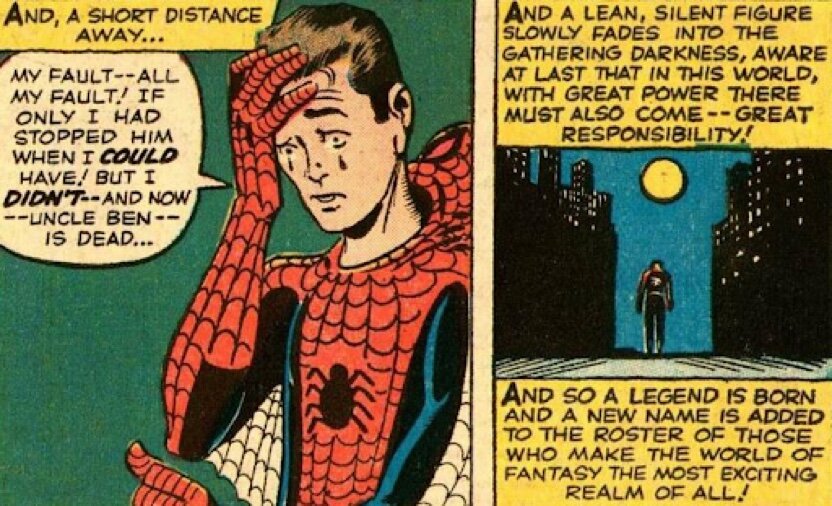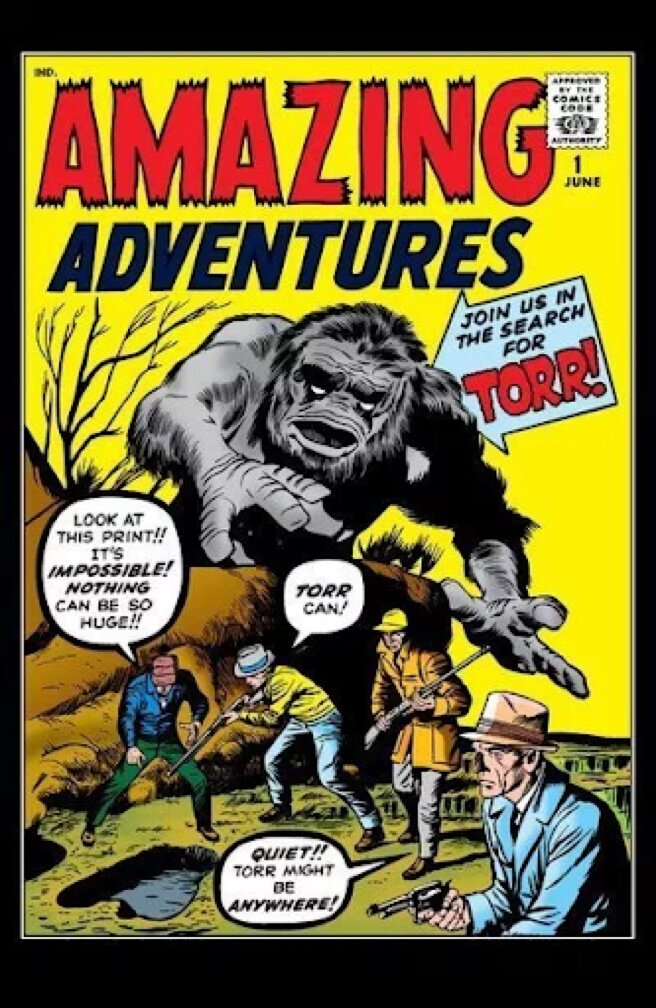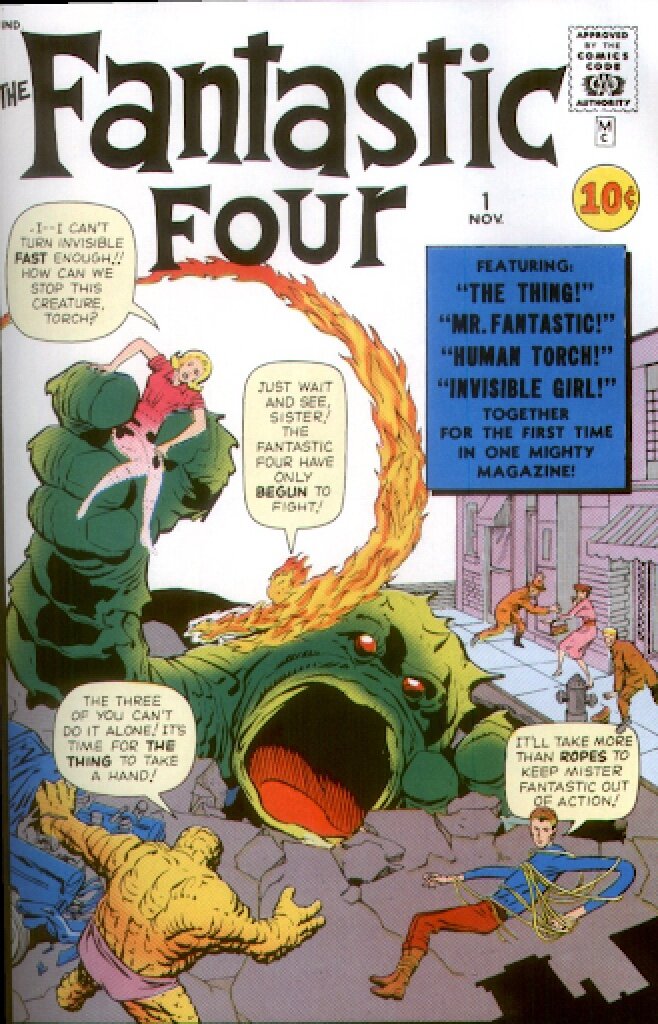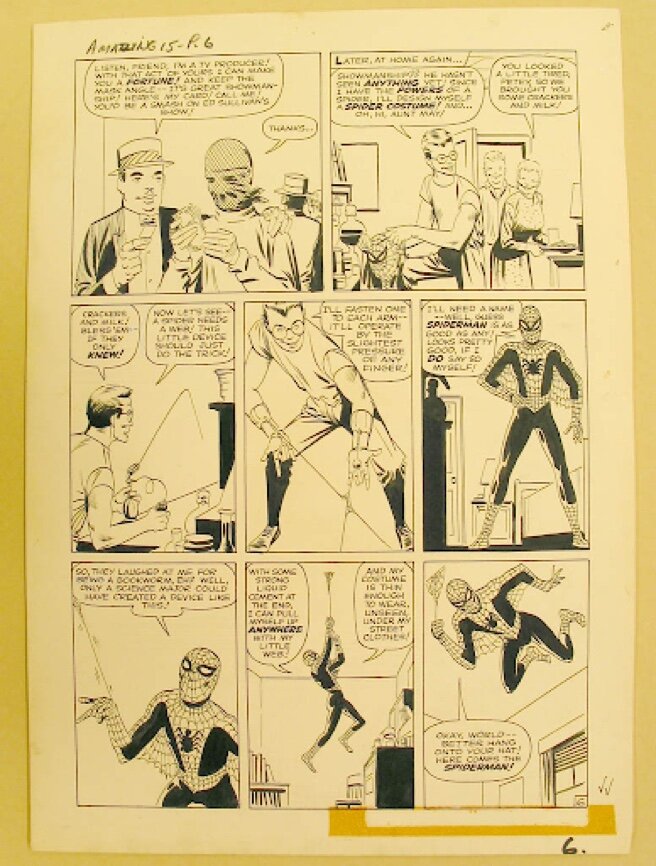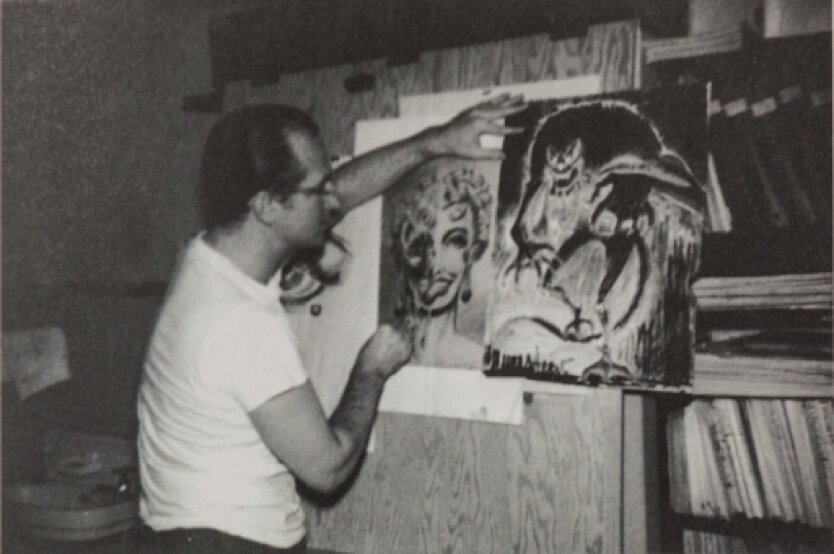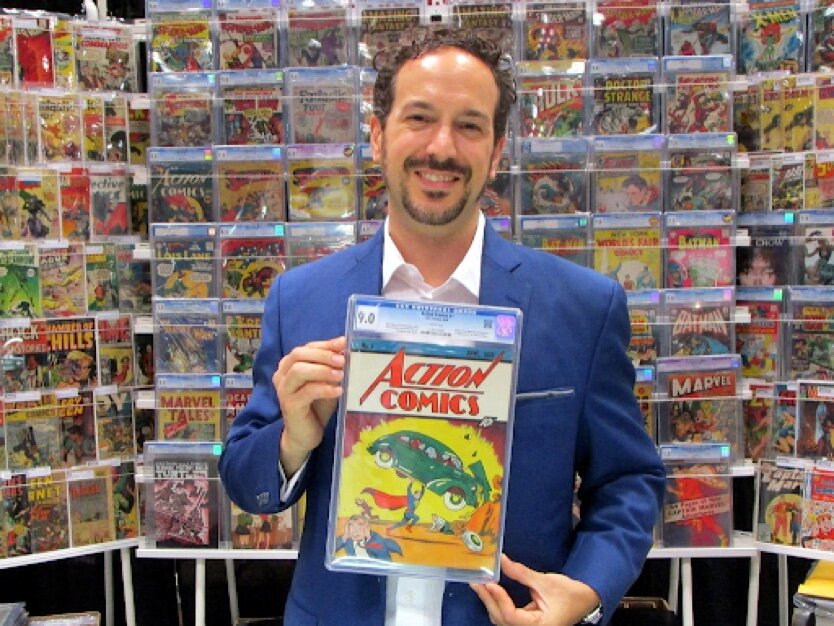Behind the Comic: Amazing Fantasy #15, the origin of Spider-Man
“With great power there must also come – great responsibility!”
Every superhero has an origin story, and the one belonging to Peter Parker — Marvel’s famous Spider-Man — is one of the most well-known. The familiar tale has been told and retold through different presentations in Marvel comics. It has been acted out across our screens through several film and TV adaptations over multiple decades. And the emotional phrase which underpins it is so resonant and so recognizable that it is constantly parodied, reworked, referenced and paid homage by all kinds of media; a cross-cultural shorthand for any difficult coming-of-age.
But where did those famous words of Uncle Ben’s first see print? Where did the webslinger first begin to wallcrawl his way into the hearts of comic fans? The real-world cultural phenomenon that is Spider-Man has its own origin story, and it is nearly as fantastic. This is the story of Amazing Fantasy #15 - the comic book in which Stan Lee and Steve Ditko debuted their greatest creation.
Few quotes from any fictional character have gone on to have such universal impact as “the Peter Parker Principle”.
One amazing origin
We naturally look back on Amazing Fantasy #15 as the birth of this beloved hero, but at the time this issue was looked at as a last gasp of life for the book - and even for the idea of superheroes in general!
The series, which had already changed title and identity multiple times by issue #15, started out as Amazing Adventures in 1950. With superheroes having slipped out of vogue in the comics world during the post-war years, these comics featured short, dramatic stories of pulp adventure and science fiction.
Having already failed to revive the superhero hype with reboots of its early 40’s hits, The Human Torch and The Sub-Mariner, Atlas Comics (as Marvel was then known) wanted to capture a more mature audience with Amazing Adventures. After issue #7 the comics were actually retitled Amazing Adult Fantasy to try and stand out to this desired audience. This pandering even extended to a new tagline: “The Magazine That Respects Your Intelligence.” Despite the supercilious sales pitch, Lee later described the content of these issues as “filler strips” with “one-line plots”.
Sales remained low for Amazing Adult Fantasy, and by the time issue #15 entered production in 1962 there were serious doubts over whether publication would continue. But perhaps because the series had already been written off by the company, Stan Lee was able to convince editor Martin Goodman to take a huge gamble with the final issue. He wanted to use it to debut his new pet character concept: the teenaged superhero Spider-Man.
Spinning a new kind of tale
The Fantastic Four launched a new style of superhero story, which provided a template for the character of Peter Parker.
This plan would require another rebranding for the comic: removing Adult from the title, since the story of Peter Parker was definitely aimed at teens. Lee sought to build on the template he and Jack Kirby had established a year earlier with the creation of The Fantastic Four. Just as those heroes hooked readers in by showing relatable human flaws and struggling with mundane social and financial problems, Lee envisioned Peter Parker as someone who teenagers could relate to and identify with.
Convinced that this high school superhero could turn the ship around at Atlas Comics, Stan Lee submitted the premise for his debut story to his editor. Goodman was immediately opposed, since Lee’s Spider-Man pitch ran against all current industry trends and logic. As Lee later recalled:
"He gave me 1,000 reasons why Spider-Man would never work. Nobody likes spiders; it sounds too much like Superman; and how could a teenager be a superhero? Then I told him I wanted the character to be a very human guy, someone who makes mistakes, who worries, who gets acne, has trouble with his girlfriend, things like that. [Goodman replied,] 'He's a hero! He's not an average man!' I said, 'No, we make him an average man who happens to have super powers, that's what will make him good.' He told me I was crazy."
Crazy or not, Lee eventually wore Goodman down and was given permission to run the Spider-Man story in what would be the final issue of Amazing Fantasy. Nevertheless, readers at the time and in years since have encountered a defiantly optimistic editorial which insists “the Spider-Man will appear every month in ‘Amazing’!” Stan Lee might have been the biggest True Believer of them all!
Whatever visionary confidence compelled Lee to write those words, he ended up with the last laugh. Though Atlas was done with Amazing Fantasy, Goodman and other executives were shocked months later when sales figures came back with the Spider-Man issue a clear leader! Work began immediately to give the webslinging hero his own title, and he returned with The Amazing Spider Man #1 in 1963. Peter Parker would carry that titular reminder of his Amazing origins through another 441 issues, spanning over 43 years!
From the greatest minds in comics
The original drawings for the first Spider-Man story have been donated to the Library of Congress.
The Spider-Man Lee brought to Goodman was already a composite of several ideas. Stan had taken the name from one of the great pulp fiction heroes of the 1930s, and further developed the idea with Jack Kirby. Kirby then told Lee about an unpublished character he had sketched up years beforehand; the Silver Spider, who gained his spider-powers from a mysterious magic ring and shot at foes with a web-pistol!
Lee seemed all ready to run with that idea, but when he got his hands on Kirby’s first pages of draft artwork, he was aghast. “I hated the way he was doing it! Not that he did it badly—it just wasn't the character I wanted; it was too heroic."
Stan would keep Kirby on board for Amazing Fantasy #15’s iconic cover, as he rated no artist above “The King” for cover work. But he wasn’t going to print with Kirby’s character design if he could help it.
Instead, Lee turned to Steve Ditko for an improved version of Spider-Man’s image. Ditko, who was used to having plenty of creative leeway in their collaborations, completely redesigned the new superhero and his gear:
“One of the first things I did was to work up a costume. A vital, visual part of the character. I had to know how he looked ... before I did any breakdowns. For example: A clinging power, so he wouldn't have hard shoes or boots, a hidden wrist-shooter versus a web gun and holster, etc. ... I wasn't sure Stan would like the idea of covering the character's face but I did it because it hid an obviously boyish face. It would also add mystery to the character…”
Steve Ditko working in the Hell’s Kitchen apartment where Spider-Man was “born”.
Yep - it was essentially the Spidey we know and love today, fresh off the page in 1962! Got it right first try.
Later, after they had long ceased to agree on anything else, both Stan Lee and Jack Kirby would give Ditko the main credit for Spider-Man’s success. As Kirby explained in a 1970’s radio interview: “(Ditko) got Spider-Man to roll, and the thing caught on because of what he did." As much as Spidey’s wisecracking made him likeable, Ditko’s full-body costume made him relatable. Any reader could, without really realizing it, imagine themselves an Avenger under that mask - an idea which would later be fully explored through a diverse cast of Spider-heroes, from Miles Morales through to Spider-Gwen Stacy.
The character of Peter Parker has gone from strength to strength in the “cinematic age” of Marvel, with three different successful incarnations crawling onto the silver screen.
The legend of #15
And now, nearly sixty years after its release, that is what Amazing Fantasy #15 represents; the legacy of Lee, Ditko and Kirby’s creation, one of the greatest in all of modern pop culture. The comic itself has been reissued and reprinted many times, including the cosmetically age-worn Birth of Spider-Man edition and the cut-down version printed for distribution alongside Sam Raimi’s 2002 feature film. And of course there are the originals themselves - still changing hands regularly, a contiguous link from a 1962 newsstand to you.
Though still less obscure today than the vanishingly rare Golden Age comics, surviving copies of Amazing Fantasy are in incredible demand “in all conditions”, according to veteran auction operator ComicLink. Sheer vintage aside, the recognition of issue #15’s status as a cultural artifact has grown rapidly. Decades of consistent interest in Action Comics #1 (Superman’s first appearance) and Detective Comics #27 (Batman’s first appearance) have also contributed to some healthy speculation, especially on the better preserved specimens!
Veteran trader Vincent Zurzolo, shown here with the first-ever Superman comic, brokered the highest-ever sale price for Amazing Fantasy #15.
In 2011, Amazing Fantasy #15 joined those other super-debuts as one of the very few comic books to have ever cracked the $1 million USD mark at auction, when a near-mint 9.6 grade holy grail copy went for $1.1 million to a private collector.
That’s as good a measure as any of the three most important superheroes in comics, and there’s a marked contrast between the trio. Batman and Superman have each undeniably left their mark on the public psyche, and they are great characters in their own right. But they are stoic, aloof guardians, sometimes frightening in their distance from the average reader.
By contrast, Spider-Man still typifies the superheroes-as-people approach which Lee and Kirby used to revitalise the genre in the early 60’s. He was the first hero the audience could watch grow and change, from an awkward high schooler to a mature, globe-trotting leader and businessman. Throughout these decades, between battles against clones, aliens, and the Devil himself, we have seen Peter Parker grapple with imposter syndrome, divorce, the tension between doing work he loves and providing for his family. We feel for him and his problems because very often, they are ours too.
The story of Spider-Man and his wider universe is one of our greatest cultural triumphs of long-form storytelling, forging a bond that unites millions of readers across the last half-century and links them all back to Steve Ditko’s little studio in 1962 Hell’s Kitchen. And that is why Amazing Fantasy’s 36-pages of bright, glossy newsprint carry so much weight.
Mythic Markets makes it possible for anyone to start investing in pop culture collectibles, including a CGC 7.0 Amazing Fantasy #15 at $46 per share.

